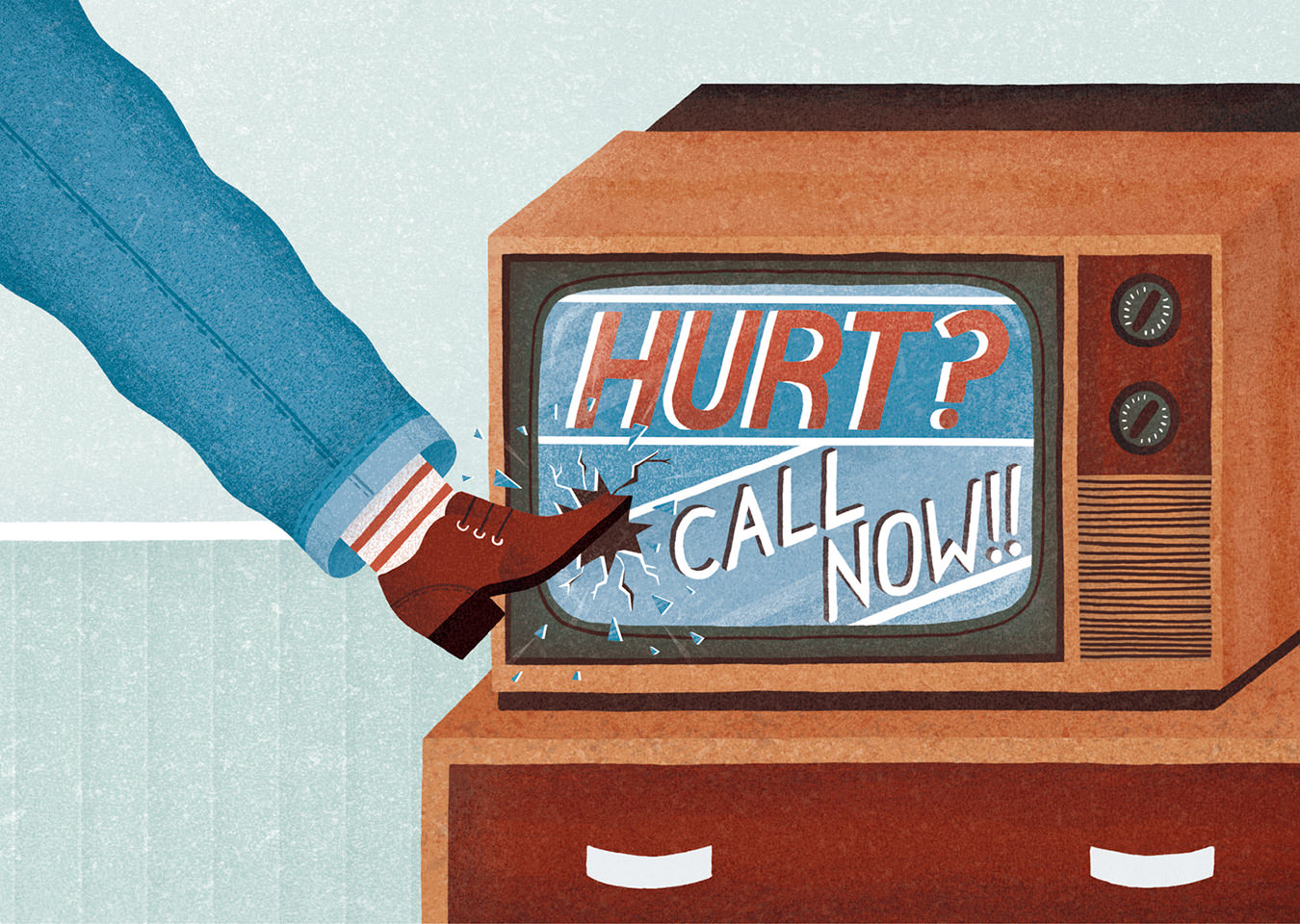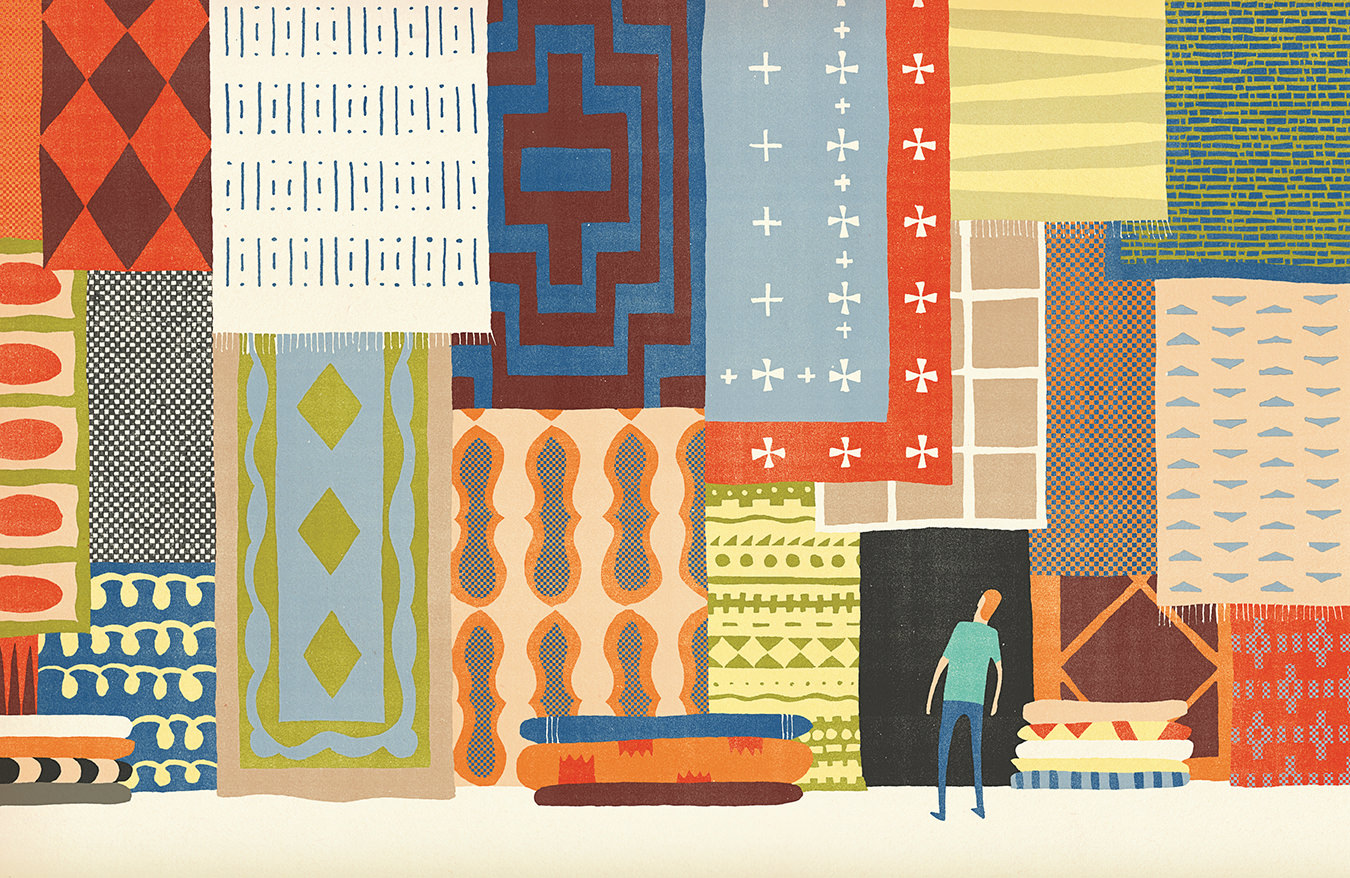Seller’s Remorse
Advertisements you can’t stand.

Never mind dropping out; as far as turning on and tuning in go, there’s never been a better time. Over the past decade, both cable (The Sopranos, Breaking Bad) and the major networks (The Good Wife, Arrested Development) have upped their game, giving us better writing, better characters, better jokes, and better plot twists than we’ve ever seen on the small screen.
As for the advertising—well, that’s another story. While critics laud the “golden age” of television, there’s been nothing to suggest that what airs between the scenes of your favourite show is a part of it. Then again, “gold” never was what advertising aspired to (at least, not in the figurative sense). As much as Don Draper makes the down and dirty work of Madison Avenue seem both critically important and irrepressibly cool, the goal of advertising is decidedly more base: to sell. Our expectations that a commercial entertain us while it raises our buying temperature are a more recent phenomenon.
Oh, but what a phenomenon. Take the Super Bowl—the advertising equivalent of the Sundance Film Festival, sweeps week, and a year’s worth of Thursday prime time all rolled into a single four-hour block. Over the years, what takes place during the pauses, time outs, and breaks built into America’s biggest sporting event has become almost as big as the game itself: a showcase of 30-second dramas and comedies whose best examples will be critiqued and praised, liked and tweeted, and discussed in front of the water cooler and in innumerable graduate seminars long after the winners on the field fade into memory.
Such ads aim to be more than sales messages, and they typically have the production budgets to match. More accurate to consider them the visual heirs of the animated shorts and cinematic serials of a previous age: easy-to-digest amuse-bouches to get you primed for the more serious fare to come. Funny? Of course: whether it be visual or verbal, wit has always been the spoonful of sugar that makes the marketing medicine go down. Entertaining? You bet: by regaling your customer, you make them more receptive to your brand message, be that an imperative (“Just do it”), a suggestion (“I’m lovin’ it”), or an admonition (“Don’t leave home without it”).
At least, that’s in an ideal case. The reality is, for every ad that makes it to the Super Bowl, there are thousands that are utterly forgettable, as well as a select few that make us want to put a foot through the high-def. How, in the end, are we to consider the dregs of the advertising world—the personal injury lawyer who nicknames himself “the Hammer”; the car dealership that insists we hurry to the lot right now; the annoying jingle we can’t seem to get out of our heads? What, if anything, can we make of all the schlock?
Yeah, good question. Contrary to what the MBA schools would have us believe, there is no formula for making good ads. The same goes for the bad. It’s offensive; it’s annoying; it’s stupid; it’s cheesy; I just don’t get it—the technical reasons why a given ad stinks are legion. But such criticisms merely describe the how, not the why. The common thread, the thematic similarity, the secret sauce they all have (or lack) that propels them from the merely bland to the abominably bad—that’s a little more difficult to define.
Here’s a thought—authenticity. More specifically, a paucity of it. Within each bad ad is a special kind of insincerity, a phoniness born of the same place as that sales guy in the bad suit. You know, the one who thinks he’s so smart the customers will believe anything he says.
It’s not that we expect our ads to be real. But we do expect their core insight to be. Good ads reflect something we recognize: a thought we’ve had, an experience we’ve gone through, an idea we’ve considered, an emotion we’ve felt or worried about or dreamed sometime before. However else they raise our hackles, bad ads offend our desire for authenticity—they’re the tasteless joke, the corny dialogue, the impossible situation, the unbelievable spokesperson, the outrageous claim, the false truth we know came from the liner pocket of the sales guy’s tacky suit rather than real life.
And that’s where things get interesting. By drawing attention to the tools of persuasion, bad ads give us something that good ads can’t—the ability to laugh at (rather than with) the marketers. Bad ads are the blip in the Matrix, that moment when we wake up and see the world of buying and selling, pitching and hustling, for the game it really is. They give us an opportunity to shake our heads at the corporate shilling and the brand chest-thumping. By being so stupid we can’t stand it, bad ads allow us to take a stand and mark a limit beyond which we will not be sold.
Try telling this to the people making them, though. To them, the fact that you’re sitting in your chair, reading this page, remembering that ad you hate, proves the viability of their marketing strategy. The fact is, the worst ads manage to accomplish something most ads don’t: they get remembered. And in a world where the vast majority of what we see and hear simply passes through us, that ain’t half bad.




